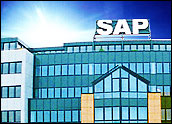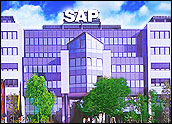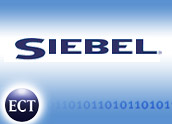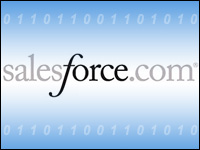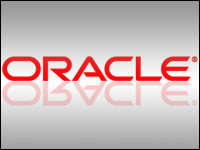
The same week software giants SAP and Microsoft own up to merger discussions, a new study shows how consolidation forces within the enterprise-level applications and services space are working to shrink the number of vendors.
The study, released Thursday by consulting firm Bain & Company, delineates the ways in which “gorilla companies” — large vendors, such as Oracle, SAP, Microsoft and IBM — continue to seek still greater size and scale through mergers and acquisitions.
Simon Heap, partner and technology strategist at Bain, and Vince Tobkin, co-head of Bain’s global technology and telecommunications practice, co-authored the study. Heap said that the current capital market environment is driving mergers and acquisitions.
“The two questions are, ‘Does this deal make strategic sense, and can it be made at the right value?'” he told CRM Buyer.
Citing the Tech Gorilla
Heap said the Bain study was carried out as part of its normal research for its consulting business. He and Tobkin drew on readily available data on nearly 500 public software companies to draw the report’s conclusions.
The study describes two species of gorilla companies — sizeable, software-focused companies like Oracle and SAP and technology gorillas like IBM, Cisco, HP and Microsoft.
Microsoft is the obvious example of a tech gorilla because it uses profits from its position in desktop operating systems and applications to fund investments in enterprise applications, security, systems and management, Heap explained.
Heap reviewed the tech gorillas’ investment capacities by considering the size of their war chests, which were determined by their cash reserves, debt capacity and market valuations.
According to him, these gorillas’ war chests dwarf even those of large software gorillas, making them likely to have an influence on the industry, the study observes.
Unprofitable Companies
The study discloses that 65 percent of public software companies are not profitable — although it does point out that most of those that generate over US$1 billion in revenue annually do make a profit.
According to the report, IT spending still remains down, and customers are still reducing the number of vendors they deal with. As a result, organic growth is more difficult, leaving smaller software companies as choice targets for the larger gorilla vendors seeking expansion.
For his part, Steve Bonadio, vice president of enterprise applications at Meta Group, believes that it is just as likely that unprofitable companies will go bankrupt as be acquired.
“It’s a worrisome industry to be small in. There are hundreds of applications, and the market can’t handle them all,” Bonadio told CRM Buyer.
“Smaller players need to figure out a unique niche, and do it super well — while staying complementary with the big players to survive,” he continued.
Enterprise Software Upheaval
Many industry sectors remain fragmented, particularly in such enterprise application areas as security software, enterprise resource planning (ERP), customer relationship management (CRM), supply chain management (SCM) and content management.
The Bain study reports that the top four players in each of these sectors account for less than 50 percent of overall market share, with these areas representing the highest growth opportunities.
Such signs of consolidation were already budding even as Microsoft and SAP flirted with a merger. The study demonstrates that while mergers and acquisitions declined from a peak of $15.5 billion in 2000 to $6.4 billion in 2002, industry megadeals rose last year and in the first half of this year.
The study notes several examples of this reversal, including IBM’s acquisition of Rational for $2.1 billion; the PeopleSoft-J.D. Edwards merger worth $1.7 billion; EMC’s acquisition of Legato at $1.3 billion; and the still-contested Oracle-PeopleSoft merger, presently worth $7.7 billion.
Comparatively modest deals also have fueled this upturn, according to the Bain study, including Business Objects-Crystal Decisions at $840 million, the Veritas-Precise Software Solutions at $500 million, IBM-Candle estimated at $350 million and Serena-Merant at $303 million.
Heap sees this secondary level as one where he expects much of the merger-and-acquisition activity to play out. “Capital financing conditions look good for at least the rest of this year,” he said. “And what’s going on in software is really just a microcosm of the technology world.”
Private Equity Role Increasing
Heap went on to say that private-equity companies are playing an increasingly important role in secondary-level deal making. “[These firms] buy several companies in one market segment, integrate them and resell them for a profit,” he explained.
According to the study, such private investments remain a small part of the overall software industry today; however, their continued growth will also reshape it. Private investors want relatively predictable revenue streams – such as maintenance, expansion and upgrading of existing installations – because they leverage this revenue against cash flows, Heap said.
Not every scenario will involve mergers and acquisitions, Heap noted. One group of companies cited in the study are what he termed, “category champions.” These companies, such as Symantec, Checkpoint, Computer Associates and Veritas, are just as likely to acquire other companies as become acquired themselves.
“Survival in this business isn’t about functionality any more, but about expanding your customer base and market share,” Bonadio said.
At the same time, Bonadio pointed out that this merger mania is a signal that the software business has matured. “We saw the same kind of ‘ubermergers’ in the banking and telecommunications industry,” he said.

